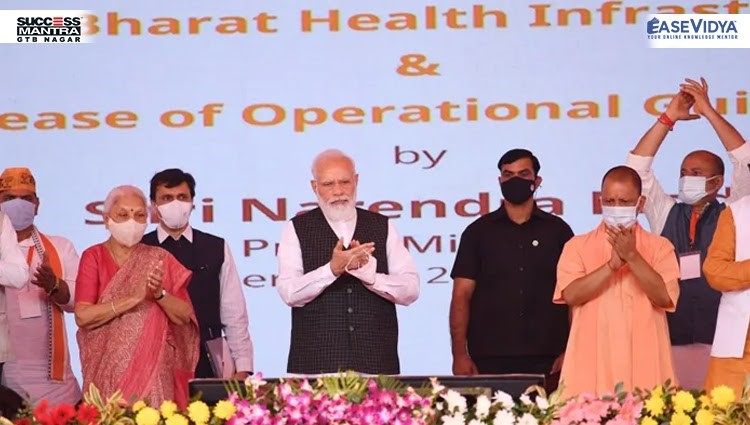
PM Ayushman Bharat Health Infrastructure Mission
January 24, 2022
5 MINUTES
Prime Minister Narendra Modi launched PM Ayushman Bharat Health Infrastructure Mission which will be one of the largest pan-India schemes for strengthening healthcare infrastructure across the country.
- Its objective is to fill gaps in public health infrastructure, especially in critical care facilities and primary care in both urban and rural areas.
- Through this, critical care services will be available in all the districts of the country with more than five lakh population through exclusive critical care hospital blocks, while the remaining districts will be covered through referral services.
- People will have access to a full range of diagnostic services in the public healthcare system through a network of laboratories across the country, and integrated public health labs will be set up in all the districts.
- Integrated public health labs will also be set up in all districts, giving people access to “a full range of diagnostic services” through a network of laboratories across the country.
- An IT-enabled disease surveillance system will be established through a network of surveillance laboratories at block, district, regional and national levels.
Current situation of India’s health infrastructure
- India had 85.7 physicians per 1,00,000 people in 2017 (in contrast to 98 in Pakistan, 100 in Sri Lanka and 241 in Japan).
- 53 beds per 1,00,000 people (in contrast to 63 in Pakistan, 79.5 in Bangladesh, 415 in Sri Lanka and 1,298 in Japan).
- 172.7 nurses and midwives per 1,00,000 people (in contrast to 220 in Sri Lanka, 40 in Bangladesh, 70 in Pakistan, and 1,220 in Japan).
- India has among the highest out-of-pocket (OOP) expenditures of all countries in the world- 62% of the total health expenditure in India is OOP.
Reasons and causes for this:
- Low public expenditure- 1% of GDP 2013-14 and 1.28% in 2017-18 (including expenditure by the Centre, all States and Union Territories).
- Centre is the key player in public health management because the main bodies with technical expertise are under central control. The States lack corresponding expert bodies such as the National Centre for Disease Control or the Indian Council of Medical Research.
- States also differ a great deal in terms of the fiscal space because of the wide variation in per capita health expenditure.
Solutions:
- There is an immediate need to increase public spending to 2.5% of GDP, despite that being lower than the global average of 5.4%.
- There is a need to depart from the current trend of erratic and insufficient increases in health spending and make substantial and sustained investments in public health over the next decade.
- Increase the Public-Private Partnerships to increase the last-mile reach of healthcare.
- Generic drugs and Jan Aushadi Kendras should be increased to make medicines affordable and reduce the major component of Out of Pocket Expenditure.
- Encourage a culture of innovation in India and help develop policy on innovations that will focus on an Indian model for inclusive growth.
India should take cue from other developing countries like Thailand to work towards providing Universal Health Coverage. UHC includes three components: Population coverage, disease coverage and cost coverage.












0 Comment